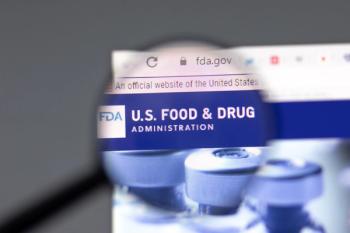
- Applied Clinical Trials-02-01-2004
Electronic Information Systems Streamline Drug Development
FDA eyes e-data submissions to improve regulatory oversight and ensure appropriate and safe drug use.
Federal health officials are aiming to improve patient care by establishing national electronic medical records and health information systems, which will allow health care professionals to share patient medical information more readily. The Food and Drug Administration has launched an ambitious program to support these efforts, beginning with a policy requiring drug manufacturers to submit product labeling information electronically.
The agency is also encouraging electronic filing of investigational new drug applications (INDs) for cancer therapies and is supporting initiatives to build databases of information on product safety, efficacy, and quality. These initiatives will provide the public with timely information on appropriate medication use through national information systems based in the National Library of Medicine.
FDA has issued a number of policies in recent years to encourage manufacturers to submit regulatory documents in electronic format. In January 1999, the agency issued a guidance on formatting electronic regulatory submissions, which it updated in October 2003. FDA also published recommendations for electronic filing of the common technical document (CTD) last August. This establishes a common format for submitting clinical, preclinical, and manufacturing information to register new drugs around the world, as recommended by the International Conference on Harmonization. Other ICH standards are changing FDA policies for electronic submission of postmarketing expedited safety reports, and for periodic adverse drug experience reports.
Electronic labels first
Until now, FDA e-submission programs have been voluntary. The agency has worked to establish uniform standards and terminologies for submitting electronic data. This will enable information systems to capture complex information on medical products, practices, and health conditions, and transfer the data over secure networks. FDA also recently clarified its electronic records and signatures policy under 21 CFR Part 11, which should encourage sponsors to develop electronic submission systems.
This progress in laying a foundation for electronic data submission and evaluation is prompting FDA to now mandate electronic data filings, starting with drug labeling information. FDA issued a final regulation in December requiring sponsors to submit the content of the package insert or professional labeling in electronic format, including all text, tables and figures.1 The rule establishes a standard format for filing labeling information for review of market applications, in supplements for new drugs and biologics, and for including them in annual reports.
The aim is to improve the review process and speed up dissemination of labeling changes and important product information to doctors and patients. The data will become part of an electronic library of labeling information for all FDA-regulated products created by National Library of Medicines DailyMed project, which health professionals and the public will be able to search for information on drug side effects and benefits. FDA officials anticipate that this policy will greatly facilitate its review of thousands of labeling changes submitted each year. When a manufacturer files even a minor change in professional labeling, the agency currently has to conduct a manual word-for-word comparison using two paper copies.
In announcing the e-labeling requirement at the 9 December 2003 meeting of the National Council on Patient Information & Education (NCPIE), FDA commissioner Mark McClellan observed that using modern information technology to improve public health is no longer optional at FDA. McClellan expects the new program will allow sponsors to provide timely updates on drug risks and benefits, and that the information will permit physicians and consumers to make head-to-head comparisons between drugs so that they can make the best choices.
As far as new mandates go, this one is not highly controversial. Most large pharmaceutical companies have been submitting labeling information electronically for some time, and the technical process for doing so is relatively straightforward. FDA will accept electronic files in PDF (portable document format), which is inexpensive and commonly available. The agency reserves the right to recommend new file formats and software in the future in response to technological advances, but promises to consult with industry and to provide ample warning before making any changes.
FDA published a proposed rule on this topic in May 2002, received only a few comments, and issued the final regulation with no changes. The requirement becomes effective in June and applies only to the content of the package insert, and not to all types of labeling on containers or submitted with advertising material. Still in the works is a new regulation that aims to restructure the content of professional drug labeling in order to make it more readable and useful to prescribers.
A related initiative aims to replace paper package inserts with electronic information. Pharmaceutical companies back this program and have been working to reduce opposition from pharmacists. Tests of a paperless labeling system are underway. These policies aim to update the system for providing prescribing information to health care professionals; the goal is labeling that is clear and timely, which presents needed information on drug benefits and side effects in an efficient manner.
Clinical data onlineThe e-labeling rule was issued just as FDA announced its collaboration with the National Cancer Institute (NCI) to establish the Cancer Biomedical Informatics Grid featuring an electronic system for the submission and evaluation of clinical trial information for cancer research. A first step is to implement a system for submitting INDs for cancer therapies electronically to FDA.
The aim is to build a system that will link U.S. cancer researchers to FDA to allow electronic submission of clinical data. The process will allow FDA to review these applications faster, which will make new treatments available to patients more quickly and at a lower cost.
This NCI collaboration is one part of a broader FDA strategy for developing a national electronic health information system. At a speech before the Urban Institute in Washington D.C. in November, McClellan described his vision for using modern information technologies to collect and analyze information on medical products to deliver safer, higher value and less costly medical care.2
McClellan highlighted the NCI collaboration and added that FDA hopes to use this experience with cancer therapies as a model for how we manage information across all of the different therapeutic areas and in every clinical trial.
Working in the cancer area will further this effort because many cancer doctors and NCI cancer cooperative groups already have established advanced information systems. Investigators in these particular groups enter clinical information electronically, offering an example of how the system can speed up the clinical trial process and provide information more readily to drug developers and FDA reviewers. In addition to enhancing FDAs review process, electronic information from clinical trials will accelerate clinical research by allowing researchers to quickly obtain answers to questions about test treatments. Policy makers also expect these systems to provide useful information on drug benefits and risks for patient subgroups, including racial and ethnic minorities, women, children, seniors, and others.
A related FDA proposal for streamlining clinical research encourages researchers to share information with FDA on how genetic differences may cause patients to respond differently to therapies. FDA officials are aware that drug manufacturers are collecting a good deal of pharmacogenomic (PG) data, but are reluctant to submit it to the agency for fear it might raise red flags for the regulators.
A new guidance3 clarifies when sponsors should submit such data as part of the review process for new drugs or biologics. FDA also defines a separate pathway for providing research information apart from official submissions, to better inform regulators and the research community of new discoveries.
The initiative involves using electronic information systems to analyze vast amounts of data that then can be made available to the medical community. FDA says it will combine PG information submitted electronically to camouflage the sponsor while generating useful information on when treatments are likely to be more effective or more safe for certain patients.
A related FDA initiative seeks to obtain more postmarket information on new drug use. Agency officials are expanding the current spontaneous adverse event reporting system and adopting innovative statistical methods to identify signals of drug safety problems more quickly. But because the voluntary reporting system is fairly limited, FDA also aims to establish broader active surveillance systems. These will be able to scan electronic medical records for signals that could indicate problems with new drugs. Eventually, hospitals and physicians will establish electronic medical records systems, and adverse event reporting will become automatic.
E-prescribing ahead
The ultimate goal is to reduce prescribing errors and improve treatment decisions through electronic prescribing systems that utilize low-cost Web technologies and palm-sized information devices increasingly being used by physicians. While electronic systems account for less than 10% of prescribing today, McClellan estimates that broader use of such systems across the United States could eliminate more than two million adverse drug events each year. FDAs e-labeling policy will encourage e-prescribing, says McClellan, along with a less-noticed provision in the Medicare reform bill that supports development of e-prescribing programs.
The legislation stops short of mandating that health plans and providers adopt such systems, but provides strong incentives for them to do so. First, it instructs HHS to establish e-prescribing standards in two years. Then, HHS will conduct a one-year pilot in 2006 to test the system and issue final standards in 2008.
The bill also provides grants to assist prescribers in installing e-prescribing programs and, even more innovative, allows Medicare managed care plans and pharmacy plan operators to pay bonuses to doctors and hospitals that participate in e-prescribing programs.
One year after adoption of final standards, all Medicare providers will have to follow the new standards if they want to use electronic prescribing systems. The scenario expects e-prescribing will drive formulary compliance, which should improve patient safety, quality of care, and yield cost savings.
1. Published in Federal Register, vol. 68, No. 238, Dec. 11, 2003, 69009-69020.
2. Remarks presented Nov. 12, 2003 available at www.fda.gov/oc/speeches/2003/urbaninstitute112.html.
3. Guidance for Industry, Pharmacogenomic Data Submissions, November 2003.
Articles in this issue
almost 22 years ago
Medicare Trial Coverage Sometimes a Trial Itselfalmost 22 years ago
Three New Technologies for 2004almost 22 years ago
EU Surprises Itself by Agreeing to Pharma RulesNewsletter
Stay current in clinical research with Applied Clinical Trials, providing expert insights, regulatory updates, and practical strategies for successful clinical trial design and execution.






.png)



.png)



.png)
.png)
